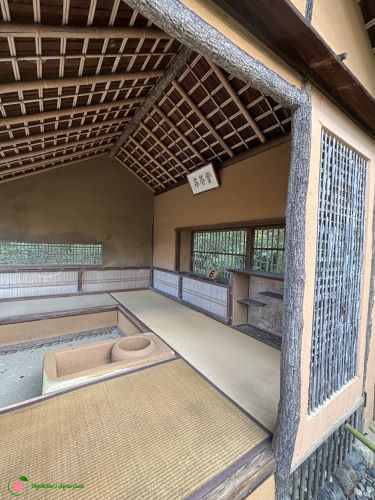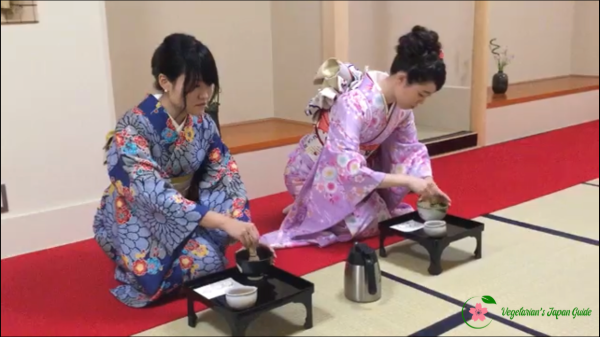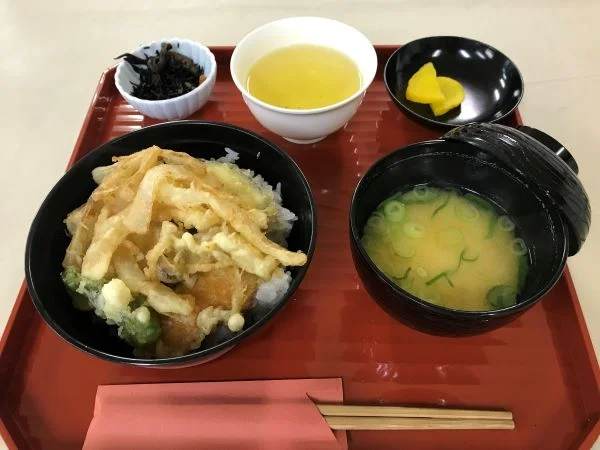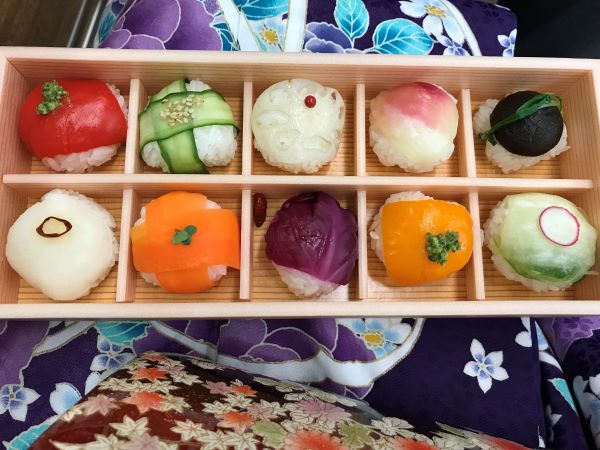The Katsura Imperial Villa (桂離宮) in Kyoto is regarded as the masterpiece of the Japanese garden. The strolling garden comprising over half of the 69,000 square meter-wide villa is amazingly designed with various traditional-style garden features. Furthermore, Katsura Imperial Villa has miraculously escaped from being damaged by fire or repeated wars, so the buildings and garden in the villa remain the same appearance and structure as when they were completed in the early Edo period. It is the perfect place to feel the beauty of traditional Japan!
Table of Contents
You can refer to HERE for photos of the building’s interior.
Tip: Katsura Imperial Villa’s fall foliage season is usually between late November to early December.
How to Get to Katsura Imperial Villa
- You can take either Hankyu’s train services, Kyoto City Bus Route 33, or Keihan Bus Routes 2, 14, and 26, 26B, or 28 from Kyoto Station.
- Katsura Imperial Villa is a 20-minute walk from Hankyu’s Katsura Station (桂駅).
- From the bus stop, Katsura Rikyu mae (桂離宮前), it is a 10-minute walk.
How to Get a Permit to Visit Katsura Imperial Villa
To visit Katsura Imperial Villa, you must join one of the guided tours conducted by the Imperial Household Agency. And don’t worry about language barriers, as an English audio guide can be rented when you get there!
Note a permit is required to enter Katsura Imperial Villa. Application is open at 5 am on the 1st of the month three months beforehand. If you plan to travel between mid-November to early December, applying by the 1st of August is recommended (or the 1st of September for a visit in December). The competition to secure a permit is incredibly fierce during the fall foliage season, with most permits gone on the 1st day!
To apply, follow the steps on Imperial Household Agency’s website HERE. Note that the address you put through must be found on Google Maps for the system to process your application.
Tip: If you were not able to get Katsura Imperial Villa’s permit via advanced reservation, you could also try the same-day application. Please refer to point 3 of the above link.
On the Day of Visiting Katsura Imperial Villa
When you get to Katsura Imperial Villa’s front gate, a large garden is in front of you. Follow the directory sign and proceed further on the road on the right, there should be a booth at the end of the road. The booth hands out the number plates for same-day tickets (the 2nd photo in the IG post below).
If you have obtained a permit beforehand, head right and follow the road to the villa’s reception building. Staff and polices should also be there to guide you.
At the reception, please purchase your admission ticket from the vending machine first (refer to the 1st and the 2nd photo in the IG post below). A ticket costs 1,000 yen.
You can then show the printed permit or let the staff know the permit number to the staff. The staff will give you a visitor pass to wear around your neck (the 3rd photo in the IG post below). At the same time, you will also receive an audio guide machine.
Before the tour starts, you can browse through the exhibits in the resting area, including photos of the interior of the teahouses in the villa.
Note that you won’t be able to enter any of the buildings in the villa.
The reception opens 20 minutes before the tour’s starting time. As the tour takes around 60 minutes, if you want to factor in the time for admission and souvenir shopping, it is best to allow 90 minutes at Katsura Imperial Villa.
Important:
☛ Please do not arrive late. Otherwise you won’t be allowed to join the tour.
☛ A pair of non-slip shoes is recommended as the stones you walk on may be wet and slippery. In addition, you will be asked to change shoes if the staff thinks your footwear may damage the garden.
Katsura Imperial Villa’s History
Katsura Imperial Villa was completed by Emperor Go-Yōzei’s brother (後陽成天皇), Prince Hachijō-no-miya Toshihito (八條宮 智仁親王) between 1615 and 1624 and was temporarily neglected after he passed away in 1629.
His son, Prince Hachijō-no-miya Toshitada (智忠親王), married Princess Fū-hime (富姫), from the Kaga Domain. Thanks to this marriage, Prince Toshitada received financial support and was able to revive and expand Katsura Imperial Villa. Tokugawa shogunate also contributed to the restoration of the Katsura Imperial Villa. By 1662, most features we see today were completed.
The villa was further expanded when Emperor Go-mizuno’o (後水尾上皇) visited it in 1658 and 1663. The four teahouses were all built during this period.
Since 1883, Katsura Imperial Villa is under the jurisdiction of the Ministry of the Imperial Household. In 1964, the governments agency purchased 7,000 m2 farmland so the landscape visible from the villa is maintained.
What to See at Katsura Imperial Villa
The villa’s main feature is the strolling garden with the pond in the middle. Buildings and tea rooms in the Sukiya-tsukuri style (数寄屋造り) are then built around the pond, each with a boat dock. This allows the aristocrats in the past to hold Waka poem parties on the boat.
From the villa’s design, it isn’t hard to tell that both Toshihito and his son possessed a high degree of creativity. It is said that detailed instructions for the construction and renovation of the Katsura Imperial Villa were given by them.
In addition to the garden and the traditional buildings, the stone-paved paths at the villa are another thing to pay attention to, as various paving styles are used!
Furthermore, as you read through this article, you will realize that many parts of the villa are designed to admire the moon. This is because the area along the Katsura River has long been known as a place for moon-viewing, so most aristocrats’ villas were located there since ancient times.
Omotemon Gate (表門)
The gate that we commoners can use to enter the villa is Kurogomon Gate (黒御門). It is the first gate that your guide will open for you on the day.
Kurogomon isn’t Katsura Imperial Palace’s main entrance. The palace’s main gate is Omotemon in Kurogomon’s northeastern direction. Although the wooden gate has a plain appearance, it is only used by imperial family members and their guests or during special occasions.

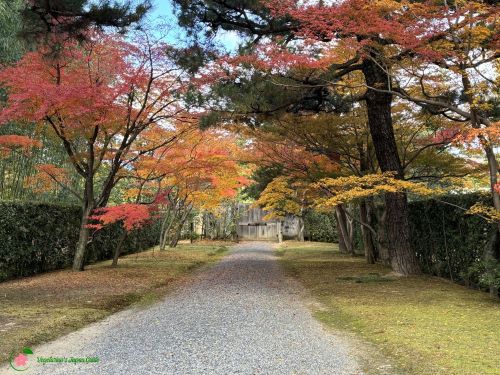
When Queen Elizabeth II visited Katsura Imperial Palace in the early 20th century, the gate she passed through was the Omotemon, made of numerous bamboo.
Miyukimon Gate (御幸門)
At the back of Omotemon is Miyukimon Gate. This thatched gable roof gate was built for the retired Emperor Gomizuno’o’s visit in the mid-17th century. Although the gate was torn down later, it was restored during the time of Prince Yakahito.
Originally, Miyukimon was initially also made of bamboo. However, the style was later changed to a country house style. Before passing Miyukimon, remember to look down to see the flat square Mikoshi stone (御輿石) at the side of the gate (where the number plates are placed). It is a stone where the palanquin was placed in the good old days.
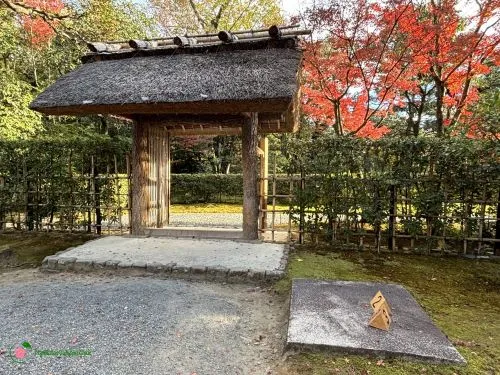

The approach from Kurogomon Gate to Miyukimon is called Omiyukimichi (御幸道). Numerous flat stones were affixed to the ground one by one to make the road flat and easier to walk on for the imperial family members and their guests.
This type of road is called Ararekoboshi (霰こぼし). It takes one craftsman a whole day just to arrange the stones of the same size in a 50 cm square, so you can imagine how much work is required to complete the whole approach!
Apparently all the stones on Omiyukimichi were numbered when Katsura Imperial Villa underwent a major renovation. This allowed all of the stones to be placed back in their original spot afterwards. After knowing this fact, we can only say that nothing can beat Japanese workmanship!
Omiyukimichi is especially stunning during the autumn foliage season. So if you are lucky enough to secure a permit to visit between mid-November and early December, get your camera ready soon after the tour starts!
Sotokoshikake (外腰掛)
The second attraction of the tour is Sotokoshikake. It is a small pavilion where guests wait for the host to serve them a cup of matcha green tea at Shokintei.
The small room next to the bench is an ancient type of toilet is called Secchin (雪隠). After people finished their businesses, they would cover the excrement with sand (think of it as a cat litter box). Of course, you can’t use it on the day.
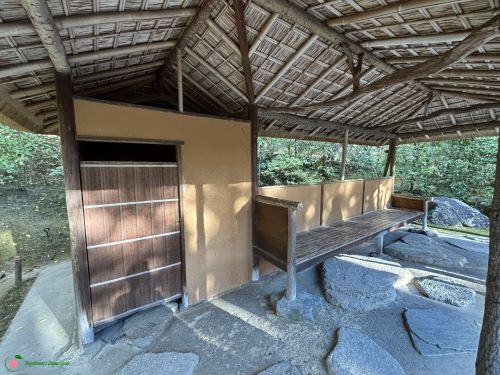
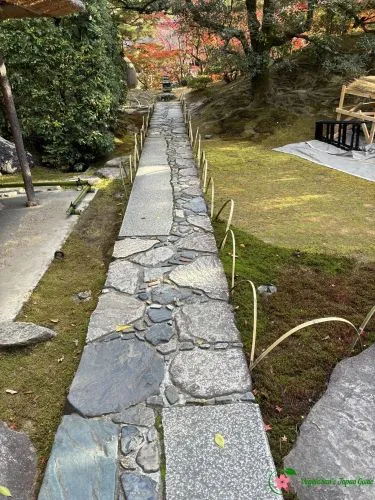
The stone passageway in front of the Sotokoshikake is called Gyōnonobedan (行の延段). It is formed by a mixture of natural stones and manually cut stones. In addition to Gyōnonobedan, there are also Shinnonobedan (真の延段) and Sōnonobedan (草の延段). Shinnonobedan is formed by purely manually cut stones, whereas only natural stones are used to lay Sōnonobedan.
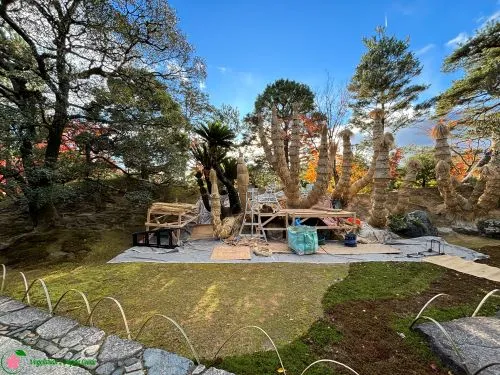
Opposite Sotokoshikake are a couple of cycads. They were offered by the Shimatsu clan (島津家), who ruled the Satsuma province in southern Kyūshū centuries ago.
As cycad bears many fruits, it was gifted to the imperial family with the meaning of hope that the family bears many offspring!
Suhama (洲浜)
The lakeshore on the way to Shokintei is covered by flat black stones. The kind of garden design that replicates the seashore is called Suhama. The stone lantern beside the water was placed to symbolize the lighthouse at a cape. The beauty of Katsura Imperial Villa is best adored from the stone lantern.
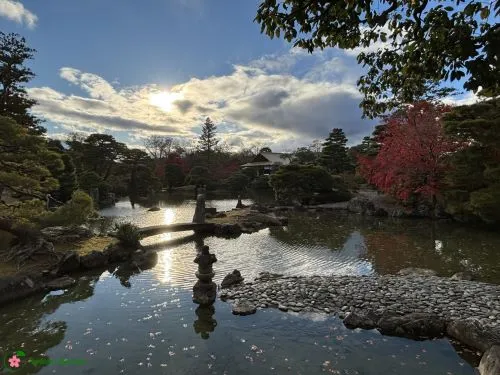
In addition, the stone bridge leading to the small island in the middle of the water represents Amanohashidate, one of the Three Views of Japan. The island in the middle is called Shinsentō (神仙島), where the immortals live.
Proceeding further from Suhama, there is another stone lantern that is worth your attention called the Oribe Lantern (織部灯籠), and is also referred to as the Christian Lantern. An image symbolizing Christ is carved onto the lantern’s post. It is one of the hidden sacred objects that the Christians at the time used for worshipping when Christianity was banned during the early Edo period.
Note that in Katsura Imperial Villa, there are seven Oribe Lanterns. Your guide most likely won’t mention them to you and will quickly walk past them.
Teamhouse: Shokin-tei (松琴亭)
Shokinte, with a thatched hipped roof (茅葺き入母屋造), is the most prestigious teahouse in Katsura Imperial Villa. Instead of the simple white paper sliding doors found in most traditional tearooms in Japan, the ones in Shokintei’s Ichinoma room (一の間) on the north have a blue and white checkered pattern. So if you ever have the chance to examine the interior of Shokintei, the artistic taste of the designer can be felt!
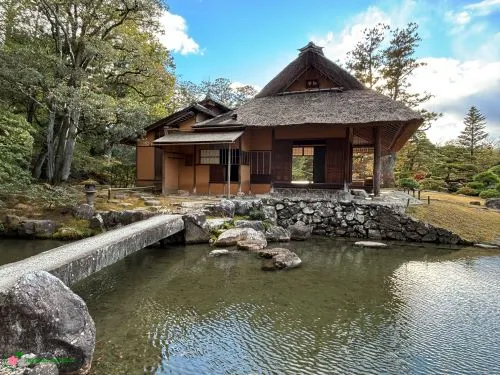
The checkered pattern is called Ichimatsu Moyō (市松模様) since the Edo period. The pattern was named after a Kabuki actor, as the Hakama he wore during one of his shows was of the same white and blue checkered pattern.
The teahouse’s name on the plaque hung under the roof was written by Emperor Go-Yōzei (後陽成天皇). While it is small, you can see it at the triangular part of the roof, just underneath the thatch. It means the sound of the Japanese harp (琴) and wind passing through the pine trees (松) at mountain peaks.
The tearoom at the left part of the building beyond the small Nijiri-guchi entrance (にじり口) consists of three tatami mats (三畳台目), a typical tearoom setting for a small group of guests. Unlike many tearooms in Japan, Shokintei has 8 windows, allowing the guests to adorn the gorgeous garden surrounding the teahouse.
As a teahouse for winter, Shokintei has a stone hearth to keep the room warm (refer to the 3rd photo in the prior IG post). Through the window at the west, the guests can admire the moon slowly descending from the sky.
Shoka-tei (賞花亭)
At the highest point of Katsura Imperial Palace is the Shokatei pavilion. Same as Shokin-tei, it faces north, perfect for those who want to escape from the summer heat.
As there are many azaleas planted in the garden, the pavilion perfect for admiring the flowers was named “Shoka”. Located on high ground, you can also see Mt. Atago (愛宕山) from Shokatei. In the past, one can even see Arashiyama and Mt. Hiei from there!
The lantern on the way to the pavilion is called Mizuhotaru (水螢), meaning firefly in the water (refer to the 2nd photo in the IG post). It is another spot to check out when visiting the small island in the middle!
As you walk down from Shokatei, get your camera ready. The area at the bottom of the staircases from Shokatei offers a wide view of Katsura Imperial Villa’s picturesque garden!
Onrin-dō (園林堂)
Onrin-dō, at the foot of the hill where Shokatei is located, is the villa’s temple. It was where the memorial tablets of the Katsura Family were previously kept. As the architectural style differs from the rest of the palace, the spot is another highlight of Katsura Imperial Villa.
In addition, the wording on Onrin-dō’s plaque is written by another emperor, the retired Emperor Go-mizuno’o.
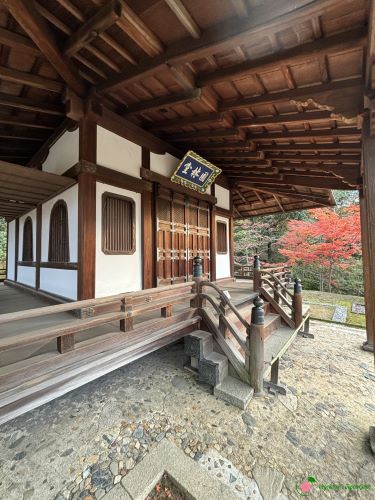
Teahouse: Shōi-ken (笑意軒)
Shōi-ken facing the shoreline is the second teahouse you will encounter. The building style resembles a countryside house. It is used in the warmer months between when rice is planted and harvested because the rice field is just at the the back of the teahouse! This is the reason why the Imperial Household Agency spent money to purchase the farmland around Katsura Imperial Villa.
This is why the stone pavement in front of Shōi-ken is Sōnonobedan (草の延段), creating a softer impression. You can refer to the last photo in the Instagram post for Sōnonobedan.

As a summer teahouse, Shōiken’s washbasin (手水鉢) was placed at the end of the approach is in the spot where the water in the basin can reflect the summer moon. So when one scoops water from the basin, it is almost like the moon is being scooped as well! This is why the washbasin was named Fugetsu (浮月).
The large teahouse consisting 7 rooms has 6 round windows above the waist-high paper sliding doors partitioning the internal space. So if you are deemed ‘too tall’, you must bend down to travel between the rooms.
The windows parallel to each other on the wall above the sliding doors are not there for decoration. It’s to prevent the teahouse from getting too stuffy. If you have a chance to examine the interior, you will notice that the sills and materials used for the lattice windows differ slightly.
The teahouse’s name on the plaque was written by Prince Ryōjohōshin’nō (曼殊院良恕法親王).
Moreover, the lantern at the boat dock in front of Shoiken is called Sankōtōrō (三光灯籠), meaning sunlight, moonlight and starlight. The unique lantern was used to light up the boat duck. You probably won’t find another stone lantern in Japan with openings in the shape of the moon, sun, and star!
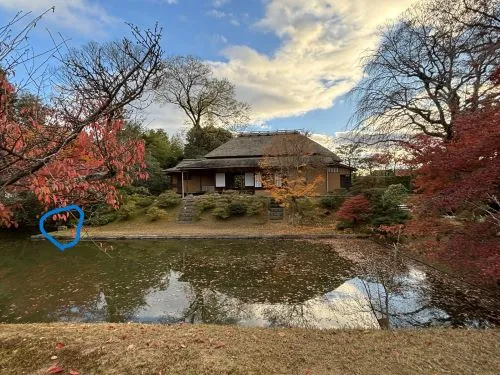
Tip: To get a good photo of Sankōtōrō, bring a telephoto lens of 300mm focal length.
Shoin (書院)
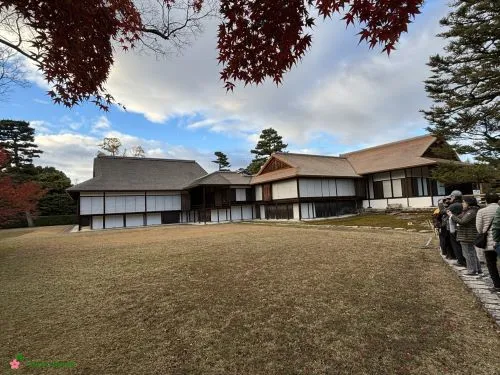
Shoin at Katsura Imperial Villa consists of several buildings. The complex is the center of the villa. It consists of several buildings, including Koshoin (古書院), Chūshoin (中書院), Gakki no Ma (楽器の間), and Shingoten (新御殿). From an aerial angle, these buildings form the shape of flying geese. It is so one can adorn the garden no matter which room he is in.
While invisible from outside, inside the Shingoten built for the retired Emperor Go-mizuno’o’s (後水尾上皇), there is a unique shelf. The Katsura-dana (桂棚) is known as one of the Three Great Shelves in Japan (天下の三大名棚).
The other two shelves of the Three Great Shelves in Japan are the Daigo-data (醍醐棚) in Sanbo-in (三宝院) in Daigo Temple (醍醐寺) and the Kasumi-data (霞棚) in Shugakuin Imperial Villa (修学院離宮).
The unique shelf is not a simple standing shelf, with the lower part of it similar to a corner desk we have nowadays. The upper part of Katsura-data has an irregular shape, with the right-hand side taller than the left-hand side. In addition, two more rectangular drawers are attached to the upper right-hand side shelf part, giving an illusion that drawers are growing from it.
You might notice that Shoin’s floor is raised by two meters. It is to prepare the building for the floods of the Katsura River, which occur regularly. The design is also made for moon admiration. In fact, the Tsukimidai (月見台) was built at the best spot for the perfect angle to adore the autumn moon. The artificial hill across the pond was thus made lower so it wouldn’t block the view of the moon ascending.
Tsukimi-dai Vernada (月見台)

In front of Koshoin’s Ninoma Room (二の間), there is a bamboo veranda expanding from the room’s wide porch into the pond built as a place to admire the moon. While the moon isn’t visible 24/7, it remains the best spot for a panoramic view of the main features of Katsura Imperial Villa.
Located by the water, the bamboo platform is another place in the villa to head over to when one wants to seek some coolness and a light breeze on a hot summer day.
The Koshoin and Tsukimidai were both built by Prince Hachijō-no-miya Toshihito around 1624.
Okoshi-yose (御輿寄)
Okoshi-yose is Shoin’s front gate. The front garden is covered with moss. The large stepping stone in front of the porch atop the staircase is a shoe rack that can fit 6 pairs of shoes (which is much larger than usual). The stone is thus called Mutsu no Kutsunugi (六つの沓脱).
The stones that form the apporach to Okoshi-yoshi are called Shinnonobedan (真の延段), formed by four square stones cut manually.
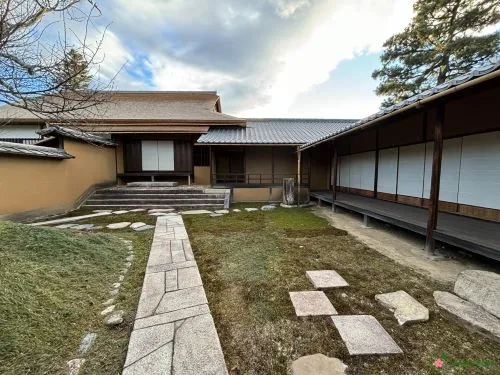
Teahouse: Gepparo (月波楼)
Gepparo by the shore is a teahouse close to Koshoin. It is the teahouse for autumn. From the teahouse, you can enjoy the view of the ascending moon and its reflection on the pond. It is also a good place to admire Shokintei on the opposite bank. If you sit inside Gepparo and look down, it would feel as if you are on a floating boat by the pond!
The earthen area in the front yard is another spot in Katsura Imperial Villa to adore the moon. In fact, it is the first spot in Katsura Imperial Villa that Prince Hachijō-no-miya Toshihito completed so that he could see the moon at night.

The room facing the pond gives the guests a clear view of the villa’s water feature. When you visit it, remember to look up. The teahouse’s decorative roof is in the shape of the bottom of a boat (refer to the 2nd photo in the IG post). The ema plaque hung close to the roof has a boat filled with treasure drawn (refer to the 3rd photo in the IG post). Maybe the roof was constructed this way in the hopes that there are treasures in the Gepparo houses!
Tsuitatematsu Pine (衝立松)
The last tourist spot in Katsura Imperial Villa is a pine tree called Tsutatematsu at the end of Miyukimichi. In fact, you might have spotted it at the beginning of the tour.
The wide tree was planted to prevent the guests from seeing the villa’s gorgeous garden before they enter one of the buildings.

Discover Kyoto Imperial Palace and Kyoto Gyoen National Garden
Katsura Imperial Villa isn’t the only facility related to Japan’s imperial family you can visit. The Kyoto Gyoen National Garden and Kyoto Imperial Palace in the city center were where the Japanese emperors lived for centuries. As no permit is required to enter Kyoto Imperial Palace, remember to check it out before leaving Kyoto!
You can refer to our Guide to Kyoto Imperial Palace for the must-see spots in this part of Kyoto Gyoen National Garden!


